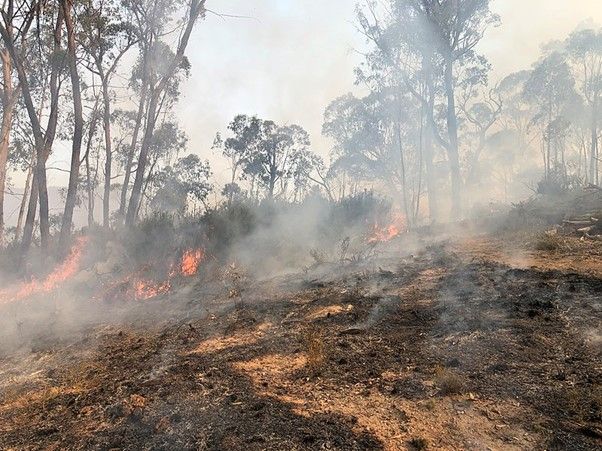Home/Curriculum resources/Fire and land management: past and present /Case Study 2: Nyungar
Learning Area:
Humanities and Social Sciences
Year level:
Level 6

Case Study 2: Nyungar
This case study is a part of the Fire and land management: past and present resource.
Clay Stephens Assists with Australian Bushfires. Photographer: BLM Idaho. Source: Wikimedia commons. License: CC BY 2.0
Nyungar (or Nyoongar) country is in the south-west of Western Australia, and has a very different seasonal calendar to the north:
Birak – first summer (December-January), dry and hot
Bunuru – second summer (February-March) hottest part of the year
Djeran – autumn (April-May) – cooler weather begins
Makuru – winter (June-July) – coldest and wettest season
Djilba – first spring (August-September) – mix of wet days with increasing clear, cold nights, pleasant days
Kambarang – second spring (October-November) – longer dry periods 0
Each season has spiritual significance, based on land and plant growth seasons. In Nyungar culture, their relationship with the land is seen as reciprocal: If we care for the land and take care of its needs, it will in turn take care of us 0 . Nyungar people feel that because they have tens of thousands of years of experience of the land, their views and ways of managing it should be heard 0 .
Hot fires over large areas are detrimental to all sections of the forest, killing trees, the seed bank (both on trees and in the topsoil) or forces germination that is too intense, leading to overly dense understorey that chokes ground cover and provides more fuel for more hot fires. Dense understoreys also make it difficult for animals to use the habitat, as their preferred habitats and foods are lost.
‘Cool fire’ can be used to promote a particular type of growth through frequent burning, for example it clears undergrowth, promoting diversity in plants, and is good for better access for people and animals. It also looks after large established trees and promotes grass and new growth, which attracts animals. Plants that grow after mild fire tend to include more species than before fire. But the practices for using fire in this way are nuanced and complex and require a detailed knowledge of the land. Burning frequency varies, depending on the plant community – whether it’s grass, shrub, forest, and what type of forest – some require monthly burning, some yearly and some every 10-15 years.
Since colonisation, fire management has changed in many areas to either not burning at all or burning at the wrong time; either the wrong time of year or the wrong frequency can alter or destroy some sub-ecosystems. Combining Nyungar traditional knowledge with modern scientific knowledge can create a very robust land management system. For example, grazing areas can be maintained but must undergo cool fire in a mosaic pattern, otherwise the area may lose quality and health 0 . It is less clear how traditional knowledge may have been used in current modern fire management plans, but moving forward both approaches can learn from each other.
In both cases, Traditional Owners are able to spend time on country carrying out slow burns, which fulfils their cultural obligations of looking after country. In the process they also can receive training from community fire services or recognised certificates in fire and land management. There are still new constraints on fire management, in that landholders and fire services must be notified, and fences and other infrastructure protected. Outcomes of the slow burns are typically better for ecosystems than local fire services carrying out burns, which also reduce fuel loads but tend to burn hotter as fire services are often constrained by time and resources. The result is knowledge is shared, and outcomes for the environment and communities are better.
Related case studies within this resources:

Case Study 1: Miriwoong
European seasons don't align with Australia's diverse climates. In the north of Western Australia, the Mirriwoong calendar has three seasons, impacting traditional Indigenous practices like mosaic-pattern burns. Reintroducing these practices alongside modern methods helps reduce fire risks, protect cultural sites, and preserve biodiversity, emphasizing collaboration between Indigenous and pastoralist communities in fire management plans.